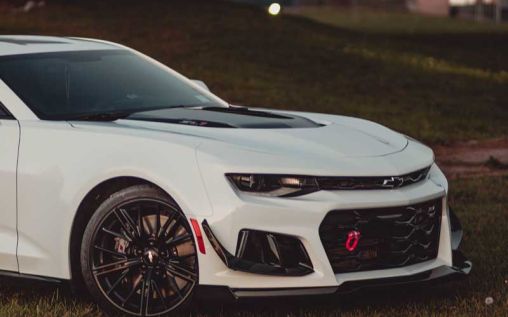The Evolution of the Chevrolet Camaro: From Its Birth to Modern Day
Posted by admin at 18 October 2023, at 06 : 38 AM

The Chevrolet Camaro, launched in 1966, is more than just a car; it’s a symbol of American automotive excellence and innovation. Originating during a time when muscle cars defined a generation, the Camaro has witnessed and evolved alongside the vast shifts in societal attitudes, economic landscapes, and technological advancements. This iconic vehicle has seen the world change around it, from the days of Woodstock and the moon landing to the age of the internet and digital revolution.
Safety, though, has been a particular area of focus throughout the Camaro’s long-standing history. As the world became more interconnected and information about car accidents and related injuries became more available, the imperative to enhance vehicular safety grew stronger. Today, as we delve into the intricate evolution of the Camaro, we’ll shed light on its adaptive safety measures. These features, which have been meticulously refined over decades, not only exemplify Chevrolet’s commitment to passenger protection but also highlight the broader automotive industry’s journey in prioritizing the well-being of its consumers.
First Generation (1967-1969): The Birth of a Legend
Unveiled to rival the success of Ford’s Mustang, the first generation Camaro was a sensation. Its sleek design and impressive performance credentials made it a favorite among enthusiasts. However, much like other cars of its era, safety features were basic. Seat belts had only recently been mandated, and concepts like crumple zones or airbags were still in infancy. Unfortunately, the lack of advanced safety measures made drivers vulnerable to serious injuries in the event of an accident.
Second Generation (1970-1981): Adapting to Change
The 1970s marked a period of significant change. While the Camaro’s design became bulkier, a reflection of the era’s design ethos, it was also a time when society began reckoning with car safety. The Oil Crisis of the 1970s led to a push for smaller, more fuel-efficient vehicles. This shift, combined with increasing awareness of car accidents and resultant fatalities, spurred Chevrolet to improve the Camaro’s safety features. Despite this, without modern innovations like anti-lock brakes or electronic stability control, Camaros of this generation still posed significant risks in collisions.
Third Generation (1982-1992): Embracing Modernity
The third generation Camaro was a departure from its predecessors. It introduced a more aerodynamic design and better handling, thanks to its lighter weight and improved suspension. This generation also saw strides in safety. Chevrolet began incorporating crumple zones – designed to absorb impact energy during a crash. Though not standard, features like four-wheel disc brakes became available, offering better stopping power and potentially reducing accident severity.
Fourth Generation (1993-2002): Advancements in Safety
By the 1990s, car safety had become a pivotal concern for manufacturers and consumers alike. The fourth generation Camaro incorporated airbags as standard – a game-changer in injury prevention during collisions. Improved structural integrity ensured that the car’s cabin remained intact during accidents, further safeguarding occupants. The National Highway Traffic Safety Administration (NHTSA) and other agencies’ focus on car safety statistics meant that vehicles, including the Camaro, were increasingly scrutinized and enhanced to meet safety standards.
Fifth Generation (2010-2015): A New Era of Safety and Technology
After a hiatus, the Camaro made a triumphant return in 2010. This generation combined retro-inspired design cues with modern engineering. Safety was paramount; the Camaro now featured a suite of advanced systems, from stability control to advanced multi-stage airbags. Crash-test ratings improved, reflecting the car’s ability to protect its occupants. Moreover, with increasing public awareness of car accidents leading to debilitating injuries, Chevrolet equipped the Camaro with features to mitigate the risks, like blind-spot monitoring and rearview cameras.
Sixth Generation (2016-Present): The Future is Here
The current generation Camaro exemplifies the pinnacle of Chevrolet’s commitment to combining performance with safety. Beyond its exhilarating speed and handling capabilities, it boasts a plethora of safety features. Forward collision alert, lane change alert, and rear cross-traffic alert systems actively work to prevent accidents. In the unfortunate event of a collision, the car’s robust structure and advanced airbag system reduce the risk of severe injuries.
In conclusion, the Chevrolet Camaro’s journey mirrors the automotive industry’s evolution. From its early days, when speed was king and safety was an afterthought, to the modern era, where performance and protection harmoniously coexist, the Camaro’s tale is a testament to how cars have transformed. Today, as we cruise in our advanced, safety-focused Camaros, it’s essential to remember the journey, the challenges, and the innovations that have shaped this iconic vehicle.
